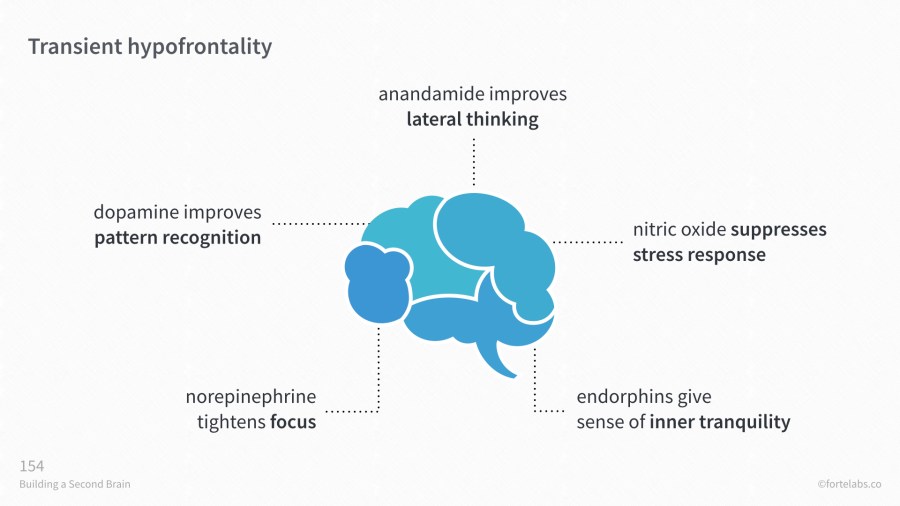
In Part 1, I introduced Return-on-Attention (ROA) as a way to evaluate how we invest our most precious resource – our attention.
But there is a key difference between investing money and investing attention. Units of currency are always uniform and interchangeable. Units of attention, on the other hand, are not at all created equal.
One minute of attention in a deep, tranquil state of concentration is potentially 100 times more valuable than the same minute waiting in line at the cashier. One hour of close collaboration with a thought partner potentially produces 100 times more value than an hour of small talk.
In other words, the state of mind you are in at any given moment powerfully shapes the quality of the attention you have at your disposal.
There is one particular state of mind that stands head and shoulders above the rest in terms of impact: the state of flow.
First researched and coined by psychologist Mihaly Csikszentmihalyi in his book Flow: The Psychology of Optimal Experience (Affiliate Link), he defines it as “A mental state of operation in which a person performing an activity is fully immersed in a feeling of energized focus, full involvement, and enjoyment in the process of the activity.”
Think of your experience immersed in a great book. The characters on the page begin to feel more real than the world around you.
Or playing a sport in which you are skilled. Your thoughts and actions seem to fuse into one pure stream of consciousness.
Or watch a child playing. They have no self-consciousness, no self-criticism. They are totally present and engaged.
Let’s take a look at what is happening in the brain during flow, which is known in the scientific literature as “transient hypofrontality.” “Transient” because it is fleeting. “Hypofrontality” because our prefrontal cortex, the seat of higher-level thinking that also contains our inner critic, seems to go dormant.
What we are experiencing is a cascade of neurochemicals, each one kicking off the next:
- Norepinephrine tightens focus, as we lose track of time and our surroundings and that attention is redirected to the task at hand
- Dopamine makes us anticipate the next discovery with excitement, while also improving the pattern recognition essential to creativity
- Anandamide improves lateral thinking, helping us route around obstacles in our thinking
- Nitric oxide suppresses the stress response that comes with creative risk-taking
- Endorphins give us a sense of inner tranquility and enjoyment as our efforts begin to pay off
What is remarkable about the state of flow is that it represents the intersection of peak enjoyment, performance, and learning. These three experiences, usually seen as tradeoffs, become catalysts for each other once we enter a state of flow.
The holy grail of modern productivity is entering and staying in a state of flow as much as possible. Studies report that satisfaction at work (and in life!) is more highly correlated with time spent in flow than salary, title, or benefits.
But flow is different from happiness, comfort, or mere engagement. Flow represents humans operating at the edge of their intellectual capability. It represents humans fulfilling their potential. It can often be difficult and uncomfortable, but produces a sense of fulfillment that people are more hungry for than ever.
The idea that states of flow are desirable isn’t news to most knowledge workers. But the typical approach to creating states of flow relies on long stretches of deep concentration, such as Cal Newport’s “Deep Work” philosophy.
This requires, among other things, avoiding or locking down all possible sources of distraction; blocking off long, uninterrupted stretches of focus time; single-tasking for as long as possible and back-to-back “sprints”; and managing the work-in-process in your head.
These methods aren’t wrong, just limited. They amount to what I call “heavy lifts” – big, heavy, long, painful slogs of work.
The problem is that heavy lifts are socially isolating. They take a toll on our bodies and minds. In an economy based on creativity and self-expression, we cannot afford to be frazzled worker bees only occasionally emerging from our caves. Not to mention, maintaining a certain quality of life and happiness requires us to be responsive to the needs of our body, our family, and our friends.
What if there was a different way to access states of flow? What if there was an alternative to heavy lifts?
If you look at the “triggers” for flow identified in the research, you’ll notice something interesting: none of them mandate any minimum block of time. I have scoured the research and nowhere have I found any evidence that there is a minimum amount of time required for flow.
As long as enough of these triggers are present, you can get into flow anytime, anywhere.
You’ve probably experienced this before: the problem at hand has just the right amount of risk and challenge, the environment has just the right balance of familiarity and stimulation, and before you know it your mind is off to the races.
On the other hand, you’ve probably experienced the opposite – all the conditions seemed to be just right, but something was missing and you just couldn’t get into the zone.
What if instead of trying to force ourselves into marathon work sessions, we adapted the structure of work itself to better fit how we want to work and live?
If we found a way to do so, the fragmentation of work into tiny pieces, distributed through time and space, could be seen not as a threat, but as a great opportunity to reinvent how work is done.
Follow us for updates on Twitter, Facebook, Instagram, LinkedIn, or YouTube.
The Only Subscription
You Need to
Stay at the
Edge of AI
The essential toolkit for those shaping the future
"This might be the best value you
can get from an AI subscription."
- Jay S.
Join 100,000+ leaders, builders, and innovators

Email address
Already have an account? Sign in
What is included in a subscription?
Daily insights from AI pioneers + early access to powerful AI tools










Comments
Don't have an account? Sign up!